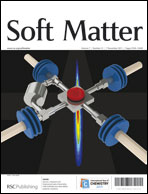In M. Scaraggi, G. Carbone, B. N. J. Persson and D. Dini, Soft Matter, 2011, 7, DOI: 10.1039/c1sm05128h (Ref. 1), we have presented a novel mean field theory of mixed lubrication for soft contacts. This theory has been developed within the framework of homogenization techniques. It is based on a perturbation second order accurate expansion; a rigorous averaging process is applied to obtain the average flow equations without the need of any preliminary fully deterministic calculations of the mixed-lubrication problem. The theory allows to calculate the flow factors and the shear stress factors taking into account the coupled effect of asperity–asperity and asperity–fluid interactions occurring at the interface. In this second paper we present the main results of the theory and we discuss the transition from the boundary lubrication regime, where the normal load is supported through asperity–asperity interactions (sometimes mediated by boundary films), to the hydrodynamic regime, where a thin fluid film prevents the surfaces from being in direct contact. We show that fluid-induced asperities flattening, as well as local percolation effects and roughness anisotropic deformation all occur at the contact interface. Finally we describe the origin of the macroscopic friction laws (the so called Stribeck curves) in terms of local average shear stresses.

You have access to this article
 Please wait while we load your content...
Something went wrong. Try again?
Please wait while we load your content...
Something went wrong. Try again?


 Please wait while we load your content...
Please wait while we load your content...